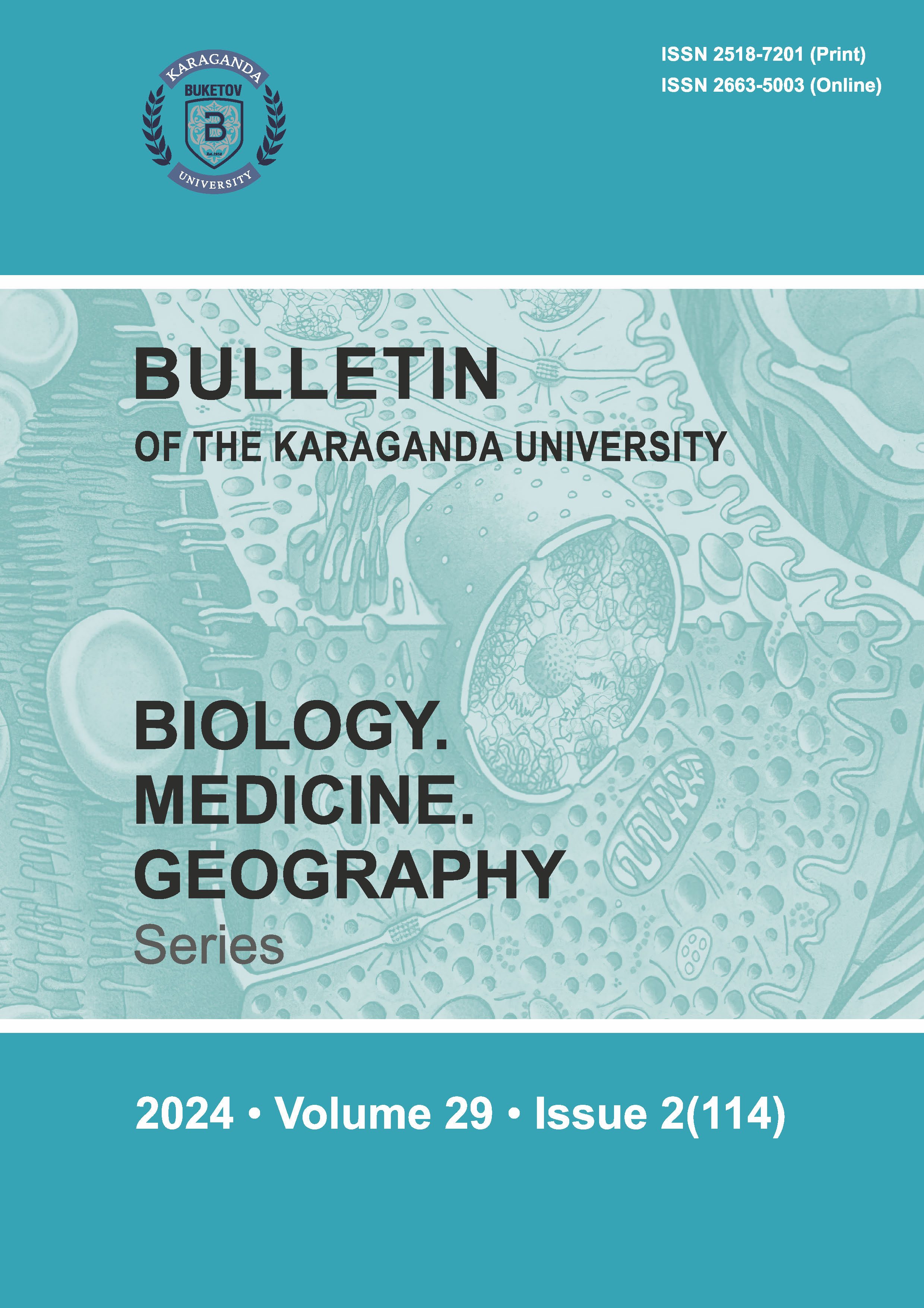Evaluation of the dynamics of TLR7, TLR4, TMPRSS13, IL-4 and IFN-γ gene expression in individuals vaccinated with Sputnik-V
DOI:
https://doi.org/10.31489/2024bmg2/86-93Keywords:
gene expression, Sputnik-V vaccine, IL-4, IFN-γ, TLR7, TLR4, TMPRSS13, SARS-CoV-2.Abstract
In our work, changes in the expression of TLR 7, TLR 4, TMPRSS 13, IFN-γ and IL 4 genes induced by immunization with Sputnik-V vaccine were investigated. The work was carried out on the basis of the Karaganda Medical University. Venous blood samples of volunteers who had not previously been vaccinated against COVID-19 were collected before vaccination, 21 days after administration of 1 and 2 doses of Sputnik-V and 6 months later. After collecting biological samples, 0.5 ml of Sputnik V vaccine containing 1±0.5×1011 recombinant adenovirus (rAd) particles was injected into the deltoid muscle. Doses 1 and 2 consisted of rAd26 and rAd5, respectively, injected at intervals of 21 days. The exclusion criterion was considered to be the presence of respiratory symptoms or a laboratory-confirmed diagnosis of COVID-19 within two weeks before the start of the study. RNA was isolated from the samples and a reverse transcription polymerase chain reaction was performed. Statistical processing was performed in IBM SPSS version 26. The Kruskal-Wallis criterion, Pearson's χ2 or Fisher's exact criterion were used for intergroup comparisons. 95 % confidence intervals (CI) were calculated using the binomial “exact” method. According to the results obtained, the overexpression of the genes TLR 7, TLR 4, TMPRSS 13, IFN-γ and IL 4 was detected. This indicates a prolonged activation of innative immunity after Sputnik-V vaccination. The results of the study confirm the hypothesis about the possibility of induction of trained immunity in humans using vaccines based on adenovirus vectors. Our results can serve as a basis for the development of more effective vaccination strategies and new vaccines, opening up prospects for improving the protection of society from infectious diseases.



